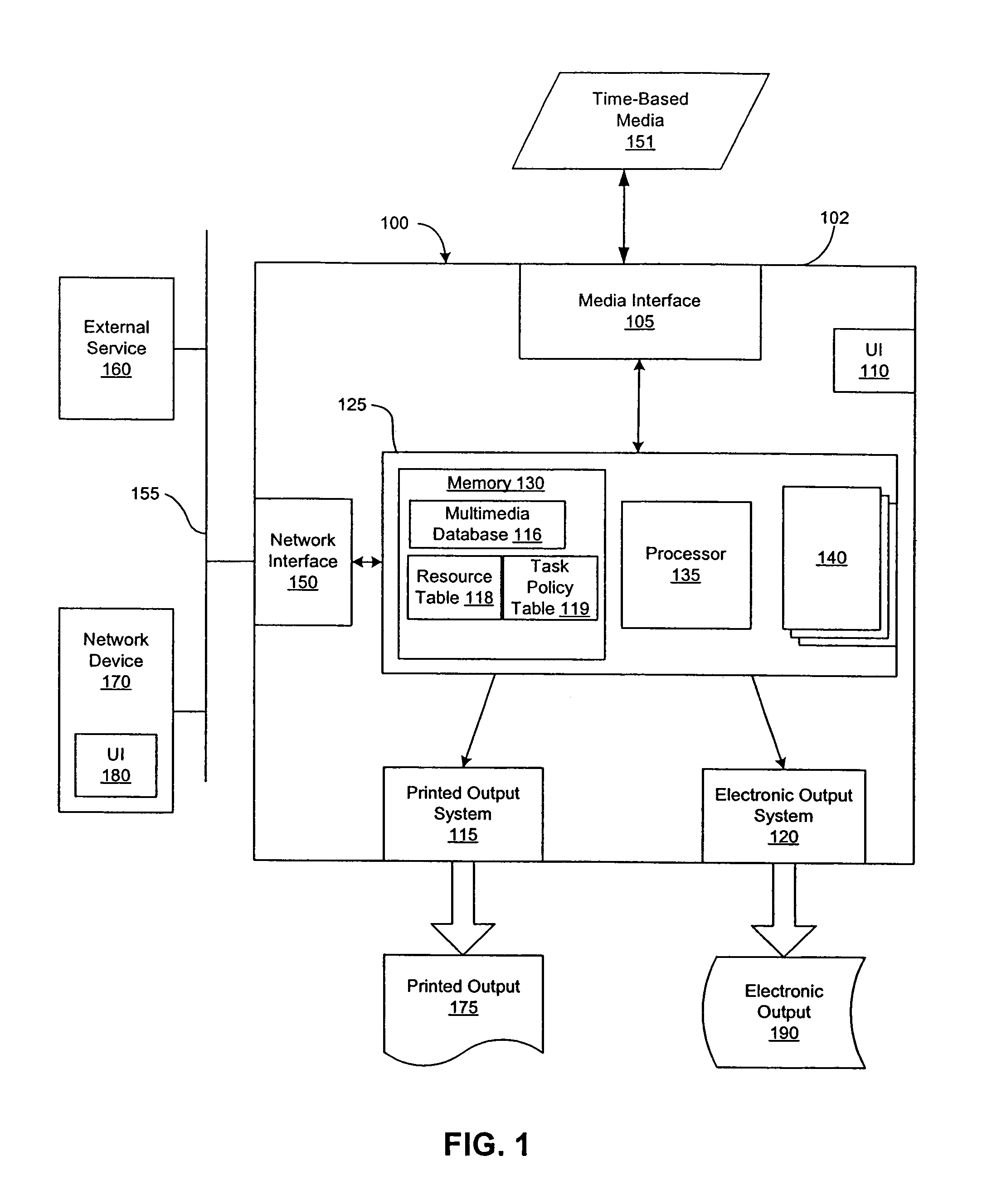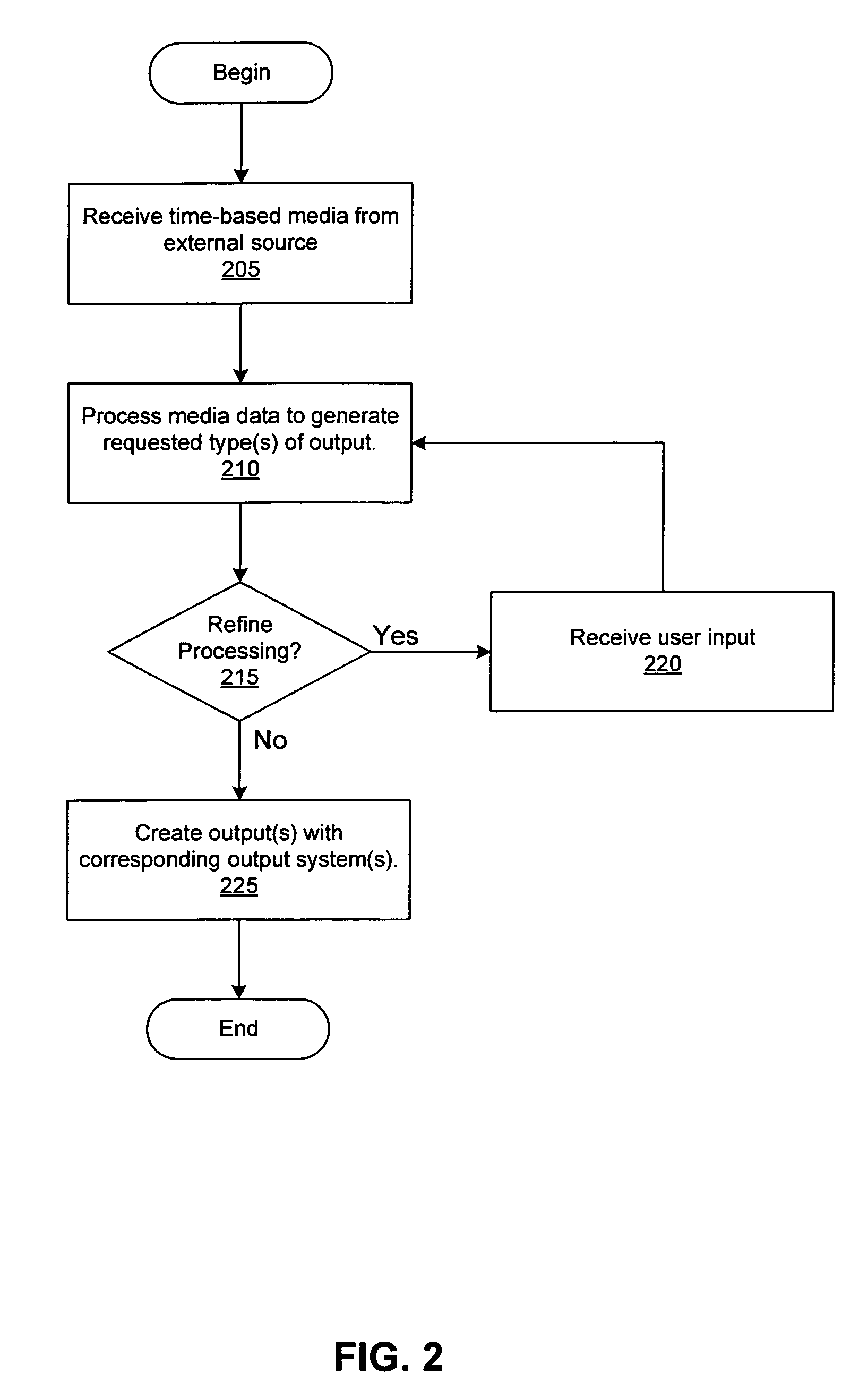Stand alone multimedia printer with user interface for allocating processing
a multi-media printer and user interface technology, applied in the field of printing systems, can solve the problems of fundamentally limited printers printers are fundamentally limited in their ability to reproduce different kinds of media, and cannot record the nuances of time-based media very well, so as to relieve at least some of the processing load, avoid slowdowns, and reduce the effect of processing load
- Summary
- Abstract
- Description
- Claims
- Application Information
AI Technical Summary
Benefits of technology
Problems solved by technology
Method used
Image
Examples
Embodiment Construction
System Architecture
[0033]FIG. 1 is a high-level diagram of one embodiment of a system for printing time based data, which includes a multimedia processing printer 100 communicatively coupled via a network interface 150 to an external service 160 and a network device 170 via at least one network 155. Examples of networks 155 are the Internet or an internal network of a company, organization or enterprise. In this embodiment, printer 100 includes within or physically attached to a housing 102 (e.g. a chassis) a media interface 105, a user interface 110, a printed output system 115, an electronic output system 120, and a media processing system 125. Capable of receiving and sending time-based media 151, the media interface 105 can take a variety of forms and may include one or more devices that can receive and / or send media data or create media data by observing a media event. In one embodiment, the user interface 110 includes a display system, one or more user input devices (e.g. a to...
PUM
 Login to View More
Login to View More Abstract
Description
Claims
Application Information
 Login to View More
Login to View More - R&D
- Intellectual Property
- Life Sciences
- Materials
- Tech Scout
- Unparalleled Data Quality
- Higher Quality Content
- 60% Fewer Hallucinations
Browse by: Latest US Patents, China's latest patents, Technical Efficacy Thesaurus, Application Domain, Technology Topic, Popular Technical Reports.
© 2025 PatSnap. All rights reserved.Legal|Privacy policy|Modern Slavery Act Transparency Statement|Sitemap|About US| Contact US: help@patsnap.com



